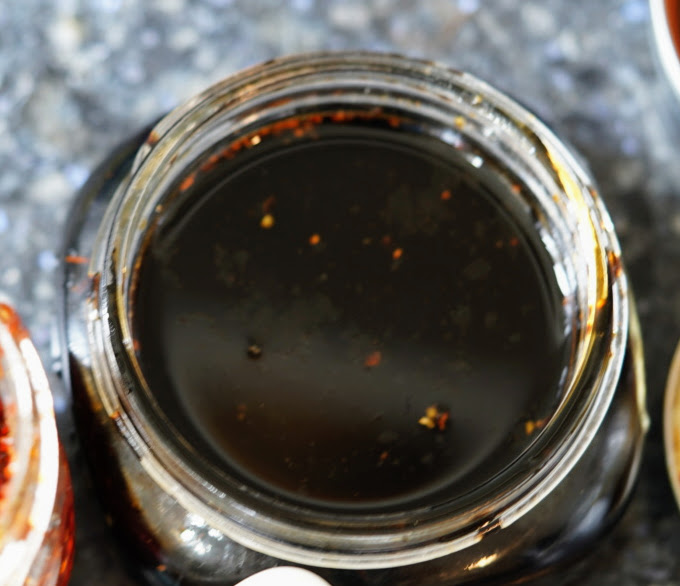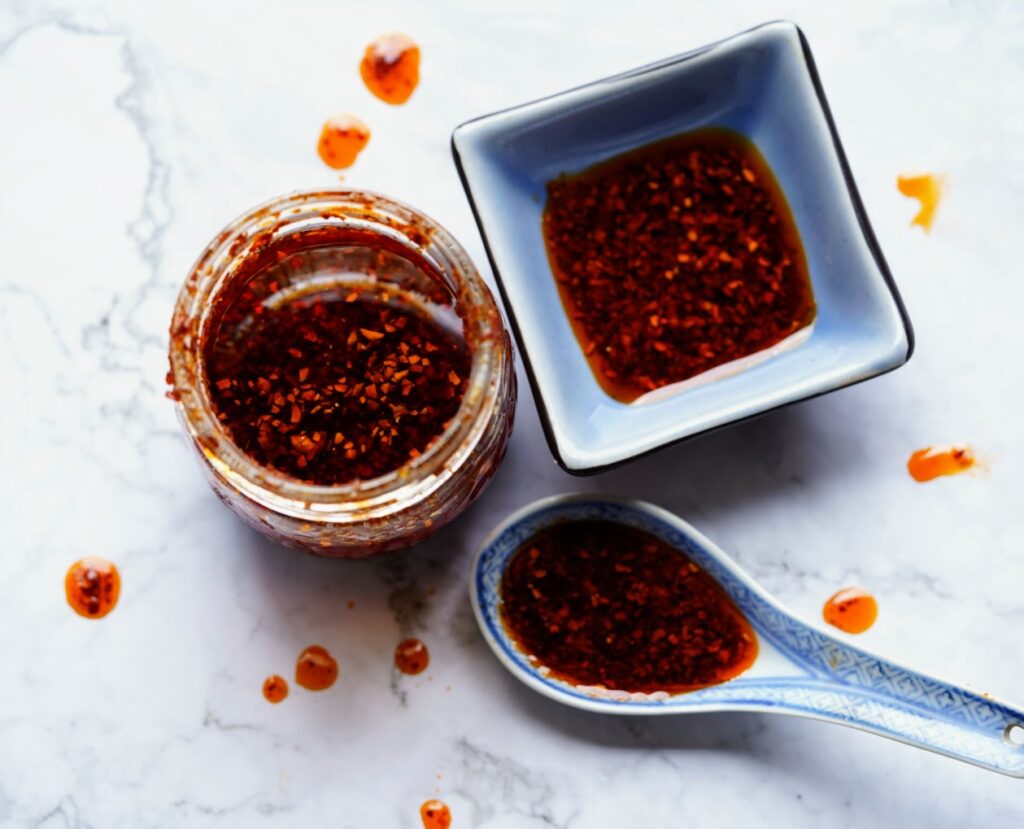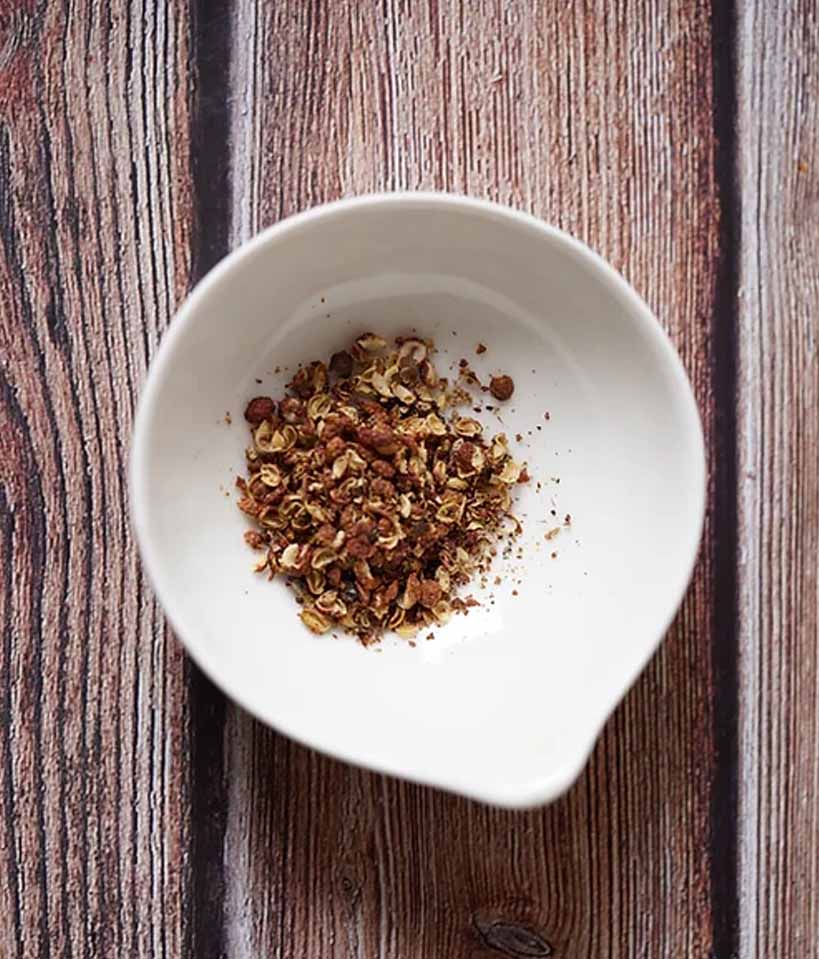Sichuan foods rely on just a few different sauces and ingredients to create its depth. Of course, Sichuan Pepper is that flavor that provides the lip numbness that we love in super spicy dishes, but we’ve learned it’s not the only flavor of Sichuan food. Other important flavors include dried shiitake mushrooms, cinnamon, sesame seeds and oil, star anise, fennel, and chili peppers. Rich savory umami flavors added to simple quality ingredients is the key to Sichuan cuisine.
Today, we’re going to share our two favorite Sichuan sauces that now have a permanent place in our fridge– Sweet Aromatic Soy Sauce and Chili Oil. With these two sauces, you can add new flavors to old favorites–and discover a few new flavors!

Sweet Aromatic Soy Sauce is the soul of many Sichuan dishes. It’s traditionally used to season cold dishes, but we’ve found it adds tremendous flavor to simple stir fried vegetables and is an easy way to add a deep flavor to many hot dishes. It’s flavor is complex, but it couldn’t be easier to make. It’s soy sauce with a bit of water simmered with cinnamon, star anise, Sichuan pepper, ginger, and date syrup. You can substitute sugar for the date syrup, but we love the rich sweetness the dates adds to this sauce. Simmer over low heat until it reduces by half which will be about 15 -20 minutes. That’s all it takes! And then you’ll find yourself spooning it over all different foods. We especially love to use it as a seasoning for cucumber salads, stir fried vegetables, sauteed greens, dumplings, and noodles! It also makes a great dip for cold hard boiled eggs!

Chilli Oil Recipe
Our second sauce, Chili Oil, is one you’ve probably experienced at Asian restaurants or even at your local supermarket. It’s easy enough to make fresh and therefore avoid some of the unsavory ingredients found in mass produced oils. With just four ingredients, the flavor of this sauce will blow your mind! Feel free to use any chili powder you like–though the flavors might not be specifically Sichuan–they’ll be delicious! We’ve chosen to use Gochugaru chili flakes as their flavor is pronounced without being super spicy–and the color couldn’t be more pretty! A candy or oil thermometer is useful though not absolutely necessary to create this recipe.
You’ll find yourself spooning this on any dish that needs a bit of heat as well as a roasty toasty flavor! We’ve been using it to flavor salads, dumplings, tofu, eggs, noodles, braised meats–well just about everything that could use a bit of a kick!

Spice It up Sichuan Style
Ingredients
Sweet Aromatic Soy Sauce Recipe
Chilli Oil Recipe
Instructions
Sweet Aromatic Soy Sauce Recipe
-
Toast your Sichuan Peppercorns in a dry frying pan or wok over low heat until you smell the pepper or for about three to four minutes. Immediately, crush in a mortar and pestle or with a heavy pan. After heating, they become quite brittle and will crush easily.
-
Add the roasted crushed Sichuan Peppercorns and the rest of the ingredients to a saucepan, stir, and bring to a simmer.
-
Allow to simmer until reduced to half. This should take about 15-20 minutes.
Chilli Oil Recipe
-
Heat oil over medium heat until about 400°F. Leave to cool it down to about 275°F (about 10 minutes).
-
Place the chili flakes, sesame seeds, and ginger in a bowl that will accommodate the hot oil. Stir together.
-
Pour just a little bit of the cooled oil into the bowl with the chili flake mixture. If the oil fizzes just gently and releases a roasty aroma, it is the right temperature. Add the rest of the oil and stir to combine all the ingredients. If the oil seems to be burning the chili flakes, add a few tablespoons of unheated oil to cool everything down. Let your oil cool just a bit more before proceeding. If your oil doesn’t fizz when added to the chilis, it is not hot enough. Reheat to bring up the temperature a bit before proceeding.
-
Allow to cool down before placing in a jar and storing in the refrigerator. Best if it steeps for at least 24 hours before using.
Note
Throughout October, we’ll be sharing Sichuan recipes which use these sauces, so keep an eye out for those recipes! And please share how you are spicing up your meals with Sichuan flavors!


